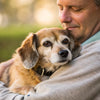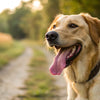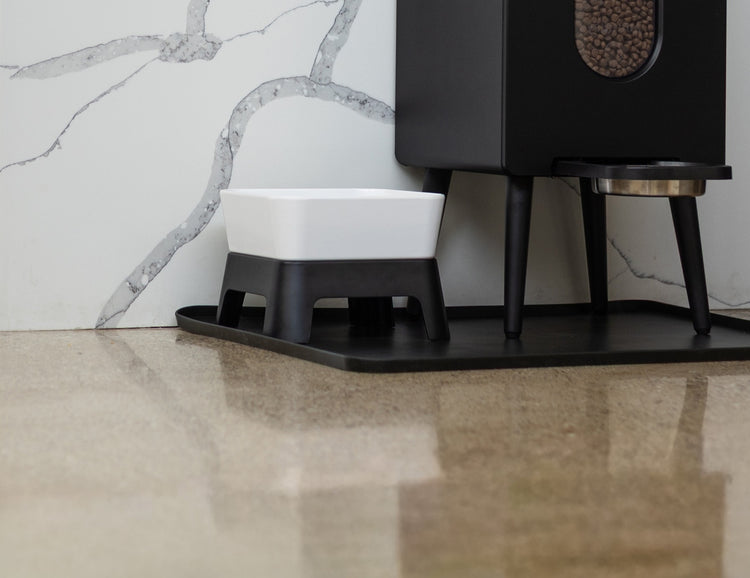How Long After Exercise to Feed Your Dog: A Comprehensive Guide for Responsible Pet Owners
- Houndsy
Table of Contents
- Introduction
- Understanding Canine Digestion
- How Long After Exercise Should You Feed Your Dog?
- Tips for Managing Your Dog's Feeding Routine
- The Role of High-Quality Nutrition
- How Houndsy Can Help
- Conclusion
- Frequently Asked Questions (FAQs)
Introduction
As dog lovers, we understand that our furry companions require not just exercise but also proper nutrition to thrive. Did you know that timing plays a crucial role in your dog's feeding schedule? Research suggests that feeding your dog too soon after exercise can lead to digestive problems, including a serious condition known as bloat. It's essential to consider how long after exercise to feed your dog to ensure their health, well-being, and happiness.
In this blog post, we will explore the implications of exercise on your dog's digestive system, the importance of meal timing, and practical tips for optimizing your pet's feeding schedule. By the end of this article, you'll have a deeper understanding of how to adjust your dog's feeding routine to enhance their health and performance. We’ll also highlight how Houndsy’s innovative Kibble Dispenser can simplify your feeding rituals while ensuring your beloved pup gets the best care possible.
Understanding Canine Digestion
The Digestive Process
Just like us, dogs have a complex digestive system that processes food and extracts essential nutrients. The average time it takes for a dog to digest food can range from four to eight hours, depending on various factors including breed, size, age, and activity level. Larger dogs often take longer to digest meals compared to smaller breeds.
Exercise and Digestion
When your dog engages in physical activity, their body prioritizes blood flow to the muscles, heart, and lungs. This diversion can slow down digestion, making it crucial to allow some time between exercise and feeding. Feeding immediately after exercise can lead to discomfort and, in extreme cases, serious health issues like gastric dilatation-volvulus (GDV) or bloat, which is particularly dangerous for deep-chested breeds.
Signs of Digestive Distress
If your dog shows signs of discomfort after eating, it may be due to improper feeding timing. Some common symptoms of digestive distress include:
- Restlessness or discomfort: Your dog may seem agitated or unable to settle down.
- Swollen abdomen: This can indicate bloat, which requires immediate veterinary attention.
- Vomiting or attempts to vomit: If your dog tries to vomit but doesn’t bring anything up, it’s crucial to consult a vet.
- Rapid breathing or excessive panting: This can be a sign of discomfort or pain.
- Pale gums: This is a serious sign that warrants immediate veterinary care.
Understanding these signs can help you manage your dog’s feeding schedule more effectively.
How Long After Exercise Should You Feed Your Dog?
General Guidelines
Veterinarians typically recommend waiting at least 30 to 60 minutes after moderate exercise before feeding your dog. This allows their body to cool down and their digestive system to stabilize. For more strenuous activities like running or agility training, waiting up to two hours may be beneficial to minimize the risk of digestive issues.
Factors to Consider
- Type of Exercise: The intensity and duration of the activity can influence how long you should wait to feed your dog. For instance, after a vigorous session, your dog may require more time to recover before eating.
- Size and Breed: Larger and deep-chested breeds are at a higher risk for bloat. If your dog falls into this category, err on the side of caution and wait longer.
- Age and Health: Puppies often have faster metabolisms and may digest food more quickly than older dogs. However, older dogs may need additional time to digest due to slower metabolic rates.
The Ideal Feeding Schedule
Establishing a consistent feeding schedule can enhance your dog's digestion and overall well-being. Here’s a general guideline to follow:
- Small Snacks: Wait at least 30 minutes after a small snack before allowing exercise.
- Small to Medium Meals: Wait about an hour after a small or medium-sized meal before engaging in physical activity.
- Large Meals: For larger meals, it’s best to wait two to three hours before exercising.
By following these guidelines, you can help ensure that your dog enjoys both exercise and meal times without discomfort.
Tips for Managing Your Dog's Feeding Routine
Create a Consistent Schedule
Establishing a routine can greatly benefit your dog's health. Feeding them at the same times each day helps regulate their digestion and can make it easier to plan exercise around meal times.
Plan Exercise Around Meal Times
If your dog's meal schedule is consistent, it becomes easier to plan walks or playtime. For example, if your dog is due for a meal soon, consider walking them before feeding or waiting a while after feeding before going out.
Provide Fresh Water
Always ensure that your dog has access to fresh water before and after exercise. Hydration is crucial for maintaining healthy digestion and overall health.
Monitor Your Dog's Behavior
Pay attention to how your dog behaves after meals and exercise. If they seem uncomfortable or lethargic, you may need to adjust their feeding schedule or the timing of their walks.
The Role of High-Quality Nutrition
Feeding your dog with high-quality food is essential for their recovery and performance. Dogs need a balanced diet that includes lean proteins, whole grains, and plenty of fruits and vegetables. Here are some key nutrients that can aid in recovery after exercise:
- Lean Proteins: Chicken and fish provide the essential amino acids required for muscle repair.
- Whole Grains: Brown rice and oats offer complex carbohydrates for sustained energy.
- Fruits and Vegetables: Carrots, apples, and broccoli are excellent sources of vitamins and minerals.
Incorporating these food types into your dog's diet can enhance their recovery and overall health.
How Houndsy Can Help
At Houndsy, we are dedicated to simplifying and elevating the dog-feeding experience. Our flagship product, the Houndsy Kibble Dispenser, combines innovative design with functionality to make feeding your dog a seamless experience.
Features of the Houndsy Kibble Dispenser:
- Perfect Portion Control: Our dispenser ensures that your dog receives the right amount of food, preventing overfeeding and underfeeding.
- Ergonomic Design: With a convenient crank at standing height, you can dispense kibble without bending over, making the feeding process easier on your back.
- BPA-Free Liner: The dispenser features a BPA-free liner that keeps food fresh and safe.
- Large Storage Capacity: It holds 25-30 lbs of kibble, reducing the frequency of refills and ensuring that you always have enough food on hand.
Not only does the Houndsy Kibble Dispenser simplify your feeding routine, but its mid-century modern design also complements your home decor beautifully.
Conclusion
As responsible pet owners, we have the power to enhance our dogs' lives by managing their exercise and feeding routines effectively. Knowing how long after exercise to feed your dog is crucial in maintaining their health and preventing digestive issues. By following the guidelines we’ve discussed, you can help your dog recover properly from exercise and avoid serious health risks.
We encourage you to reflect on your current feeding routine and consider how you can optimize it for your furry friend’s well-being. With the right approach to nutrition and timing, your dog can enjoy a happier, healthier life.
For a stylish and functional solution to your dog's feeding needs, explore the Houndsy Kibble Dispenser today and take the first step toward a more convenient feeding experience!
Frequently Asked Questions (FAQs)
How long should I wait to feed my dog after exercise?
It's generally recommended to wait at least 30 to 60 minutes after moderate exercise before feeding your dog. For more strenuous activities, consider waiting up to two hours.
What are the signs of bloat in dogs?
Signs of bloat can include restlessness, a swollen abdomen, vomiting attempts without producing anything, rapid breathing, and pale gums. If you notice these symptoms, seek veterinary care immediately.
Can I walk my dog right after eating?
It's best to wait at least 30 minutes to an hour after a small meal, and two to three hours after a large meal before walking your dog to reduce the risk of digestive issues.
How can I improve my dog's digestion?
Providing a balanced diet, establishing a regular feeding schedule, and ensuring your dog has enough time to digest food before and after exercise can all contribute to better digestion.
Why is the timing of meals important for dogs?
Proper meal timing helps optimize digestion, reduces the risk of bloat, and ensures your dog receives the nutrients they need to recover from exercise effectively.













